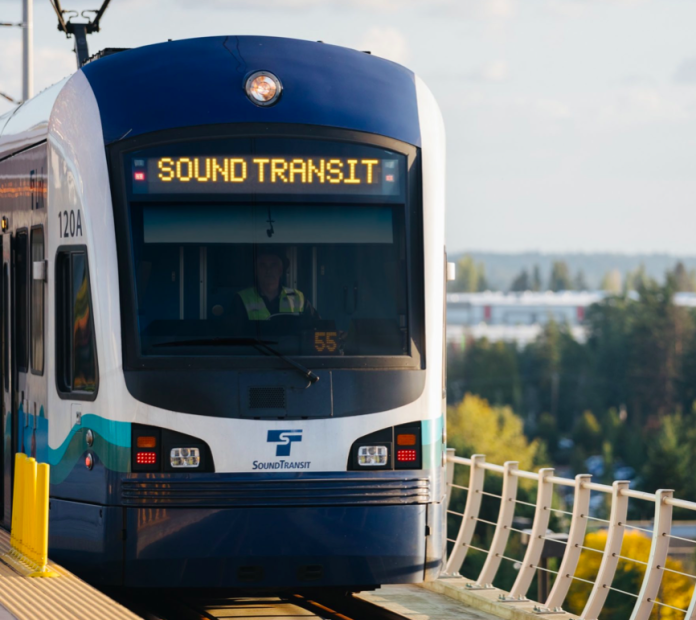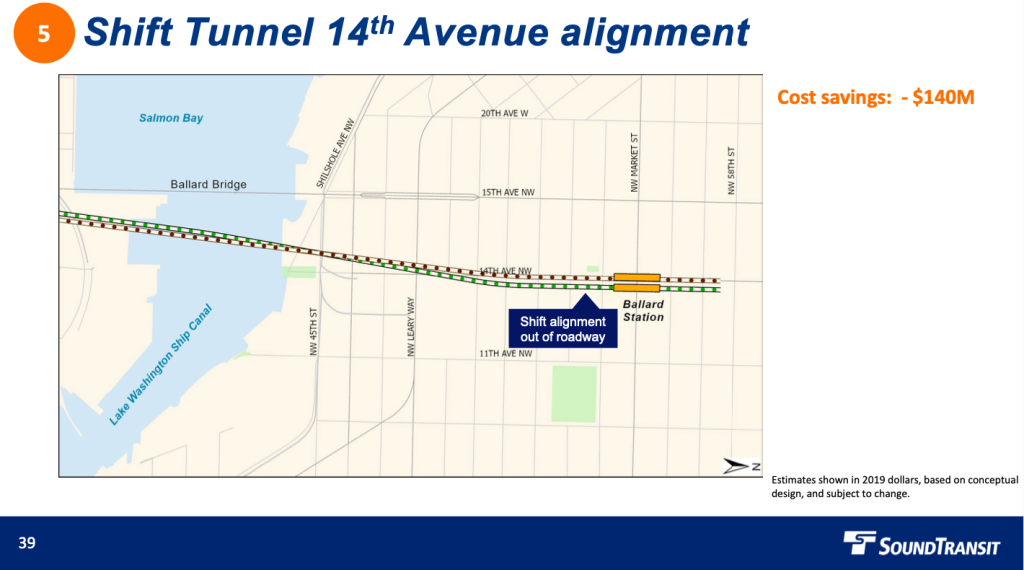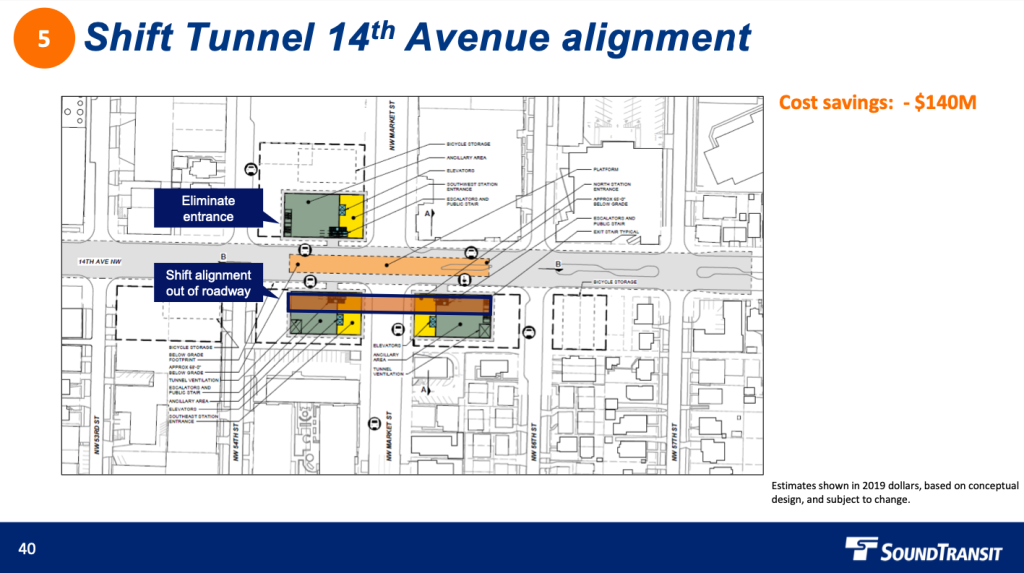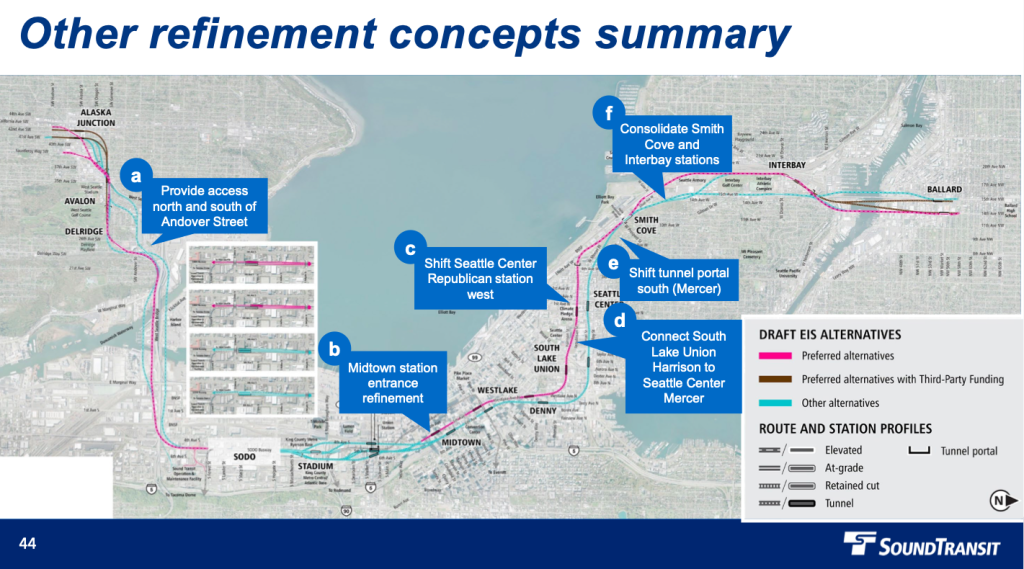The agency is contemplating dropping three stations — Avalon, Smith Cove, and South Lake Union — in a $1.3 billion cost saving package.
Sound Transit has unveiled concepts for cost savings and refinements for its Link light rail expansion into West Seattle and Ballard (WSBLE). While the information has been made public during the open comment period on its draft environmental impact statement (DEIS) for WSBLE, none of the concepts are included in the current DEIS. Additionally, Cathal Ridge, Executive Corridor Director at Sound Transit, has been very clear in his remarks to community advisory groups that while the concepts have been selected for their anticipated feasibility, none of them have been studied in depth as of yet.
“We would have to do a lot more work to vet out these ideas,” Ridge said in a presentation to the Downtown community advisory group. The agency will transmit the concepts to the Sound Transit board and rely on its feedback before moving ahead with further study.
“There are many steps to go on these ideas if indeed the board wants to look at them,” Ridge said, explaining that concepts selected by the board to advance forward would also need to be shared with the public for comment.
The need for cost savings was necessitated by a projected $1.8 billion project-level affordability gap for WSBLE, related to cost increases in property acquisition and construction. Beyond the WSBLE project, the Sound Transit board adopted a hybrid realignment plan in August of last year in an effort to keep light rail expansion on target for achieving its goals.
As part of that plan, the Smith Cove to Ballard line extension’s opening date was pushed back from 2037 to 2039. However, if the agency is able to locate the funding to fill the projected financial shortcoming, the extension could still open on time. The board’s plan also required that Sound Transit pursue funding opportunities and cost savings measures and report back on their findings.
Looking at the concepts for cost savings presented, Sound Transit could shave off more than $1.3 billion in expenses from what it has budgeted for its current preferred alternatives. Other refinements may also result in cost savings, although they would not be immediate, Ridge said.
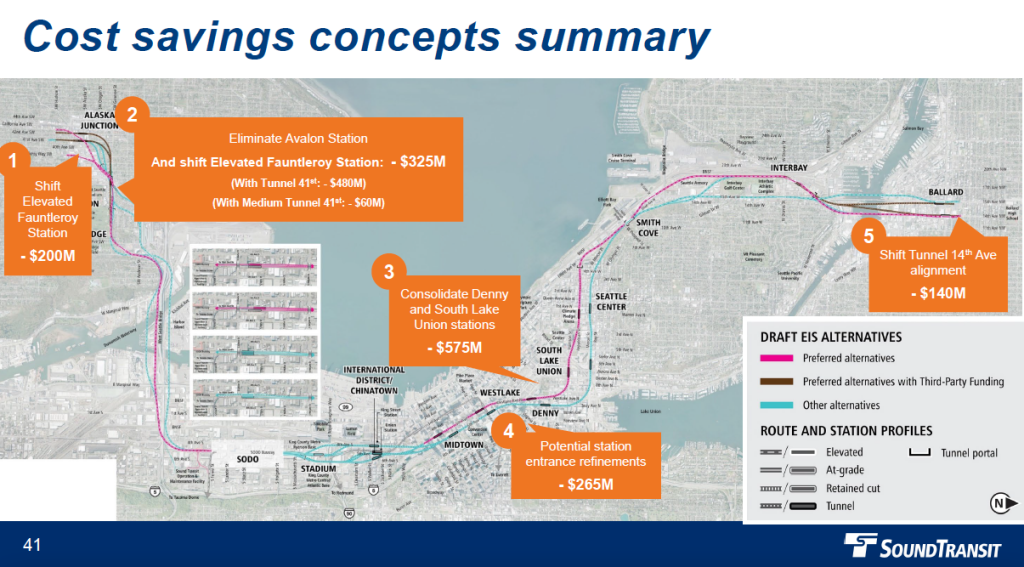
Concept 1: Consolidate Denny and South Lake Union stations
Some of these savings, however, would come at a cost to ridership, as the agency has openly acknowledged. The single greatest source of cost savings would result from combining planned stations at Denny and South Lake Union in the northern end of Downtown Seattle into a single station. The measure would save an estimated $575 million, but it would also reduce expected ridership from 154,000 daily trips based on the current DEIS alternative, to 144,000 daily trips. The new station would be located at Dexter Avenue adjacent to Denny Park.
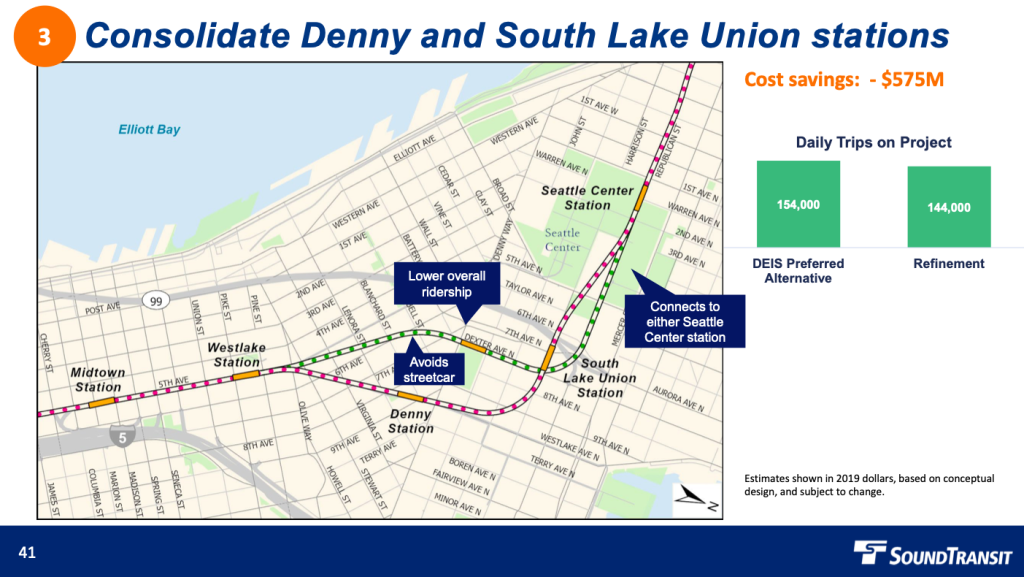
The agency has touted avoiding Seattle Streetcar impacts as one of the consolidated station concept’s strengths. It also would be compatible with both plans under consideration for a station at Seattle Center, and unlike the current preferred alternative, it would not sit astride the SR 99 tunnel portal.
But the consolidated station would be located even farther from the heart of the growing South Lake Union neighborhood than current plans call for. Concerned that the neighborhood will be left on the fringes of future light rail, Seattle Subway is calling on Sound Transit to study placing a station at a more central location near Mercer Street and Westlake Avenue N. The distance between their proposed station and Sound Transit’s consolidated station concept is roughly 0.4 miles.
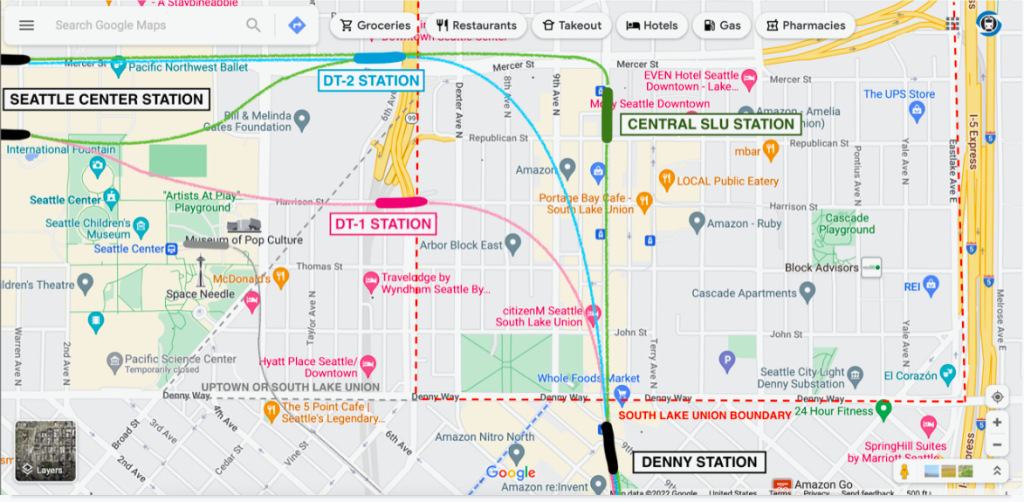
Seattle Subway is also concerned about how this particular station’s design will factor into system expansion. They’re calling for Sound Transit to design the South Lake Union station for system expansion with a North Aurora extension and the ability to accommodate higher ridership levels as the system grows. A consolidated station already planned to serve riders from the two previous station concepts may not be well situated to handle this task.
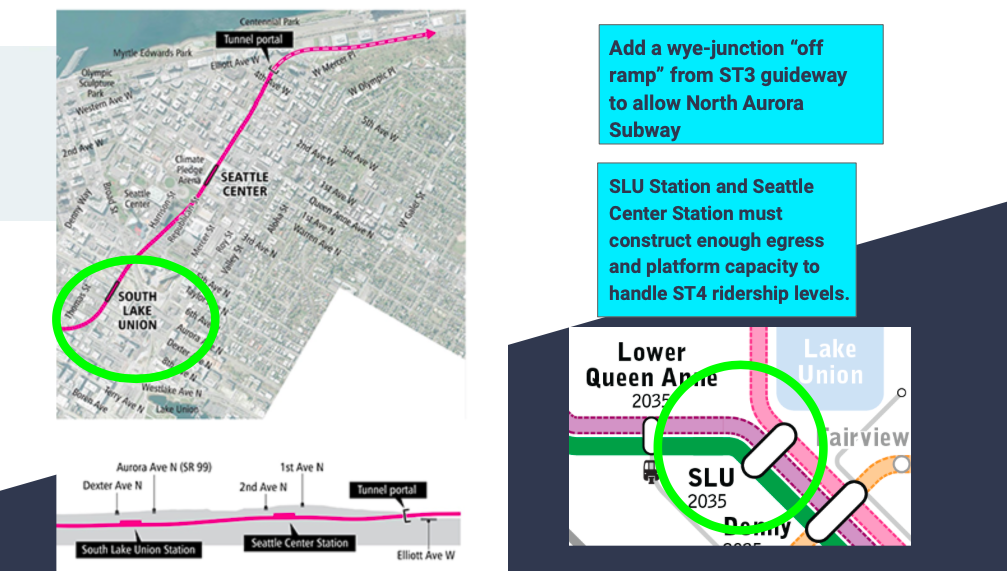
One last factor to keep in mind related to a consolidated Denny/South Lake Union station is station depth. Plans for Denny Station were were about 100 feet deep, while the South Lake Union station would be either 120 feet deep or 85 feet deep, depending on whether it is constructed at Harrison Street or Mercer Street. No details are available at this time related to the depth of a consolidated station. Deep stations pose significant accessibility impacts for future riders, a factor that will need to be examined and carefully considered by the board and other stakeholders.
Concept 2: Eliminate Avalon Station and shift the elevated Fauntleroy station
The concept that would have the second highest cost savings has two parts that could be pursued independently on the West Seattle line. It would be to eliminate the Avalon Station and shift the location of the Elevated Fauntleroy station.
The Avalon station is currently projected to have only 1,200 daily boardings in large part because it would be located next to a large public golf course. The two alternatives presented for this station also both entail complications: the retained cut option would require some property acquisitions and tunneling to Alaska Junction, while the elevated alternative would require the acquisition of a full block of properties. It seems these factors have given Sound Transit second thoughts about the projected $125 million price tag for the Avalon station, although the area has seen development in recent years and may see more in the future.
Much of the cost savings, however, in this concept would come from shifting the elevated station option. Right now, the elevated station option would currently require the acquisition of about 400 recently constructed apartments. The hefty price tag associated with acquiring those properties has made tunneling options much more financially feasible. During the presentation to the Downtown community group, Ridge disclosed only that shifting the elevated station alternative would avoid having to acquire “a developed parcel.” More details on what exactly the plans will be for the elevated Fauntleroy station will likely be shared at the upcoming West Seattle community advisory group meeting on the evening of April 12th.
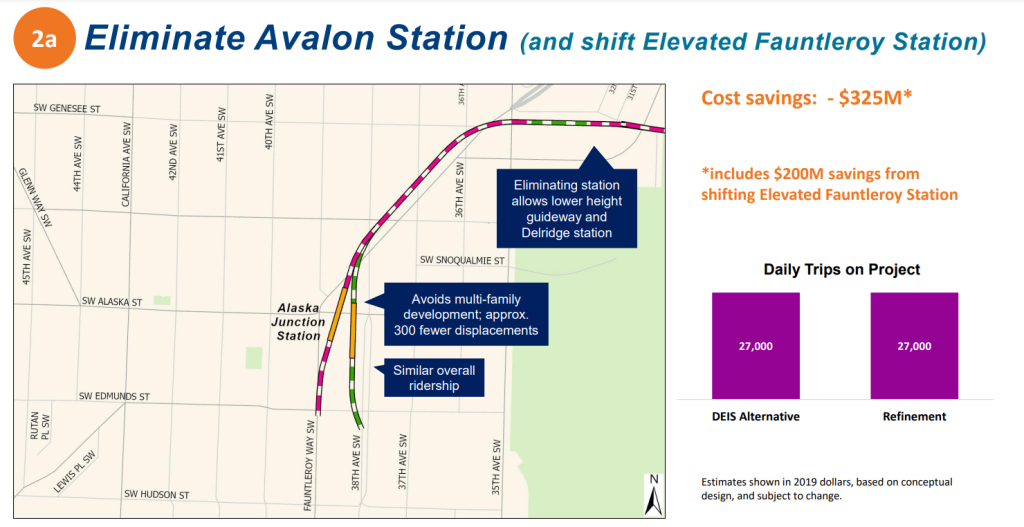
It’s important to note that the cost savings associated with the new elevated alternative for Fauntleroy depend heavily on which tunnel alternative it is compared against, and when compared against the Medium Tunnel Alternative, the savings drop to only an estimated $60 million.
Concept 3: Westlake, Denny, and Midtown Station refinements
The next greatest possible source of cost savings comes from a concept for refining the Westlake station’s entrance. Eliminating the two proposed entrances and combining them into a single entrance facing the sidewalk would avoid costly property acquisitions, trimming down costs by an estimated $190 million.
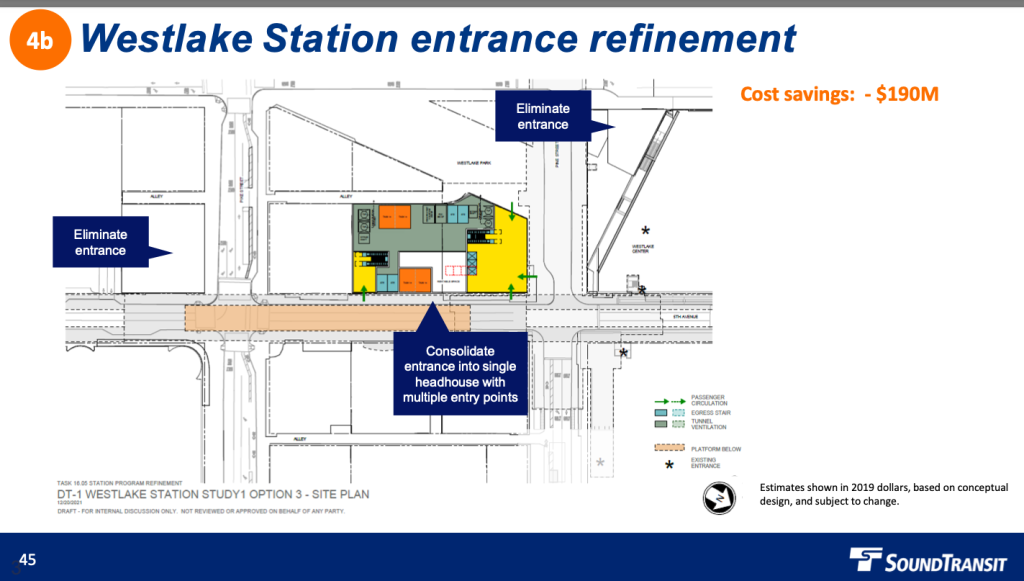
If Sound Transit continues with plans for Denny station, it could pursue cost savings of about $55 million by moving the station entrance to Lenora Street. The change would require closing the street to car traffic, but a pedestrianized street could activate the station area and work out as a significant improvement overall.
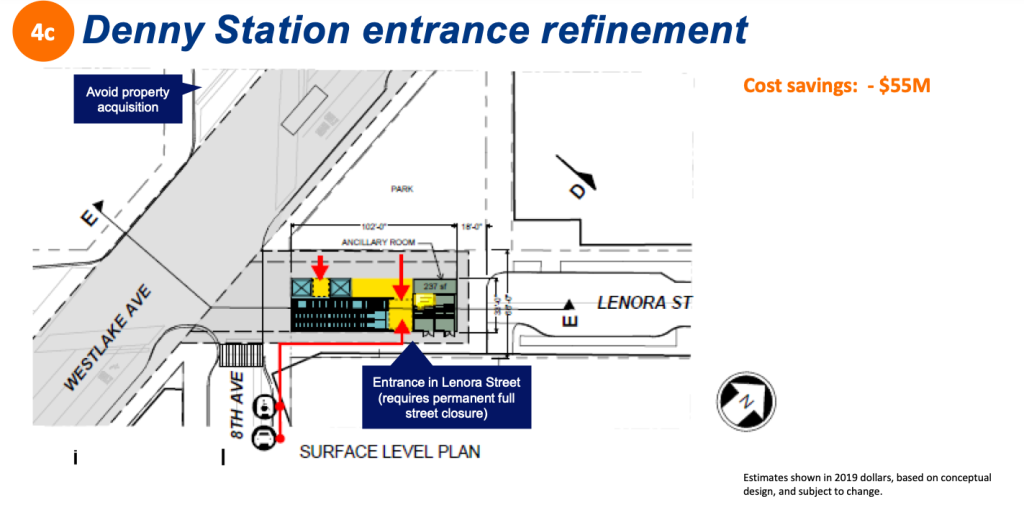
A station refinement concept has been floated for Midtown as well, although the savings are much more modest. By moving the entrance to the sidewalk and away from an existing developed property, Sound Transit could save an estimated $20 million.
Concept 4: Shift Ballard’s 14th Avenue tunnel alignment
The final cost saving concept would save an estimated $140 million by modestly changing the 14th Avenue alignment of the Ballard extension. “The idea would be to shift the alignment out of the roadway,” Ridge said at an Interbay and Ballard community advisory meeting. In comparison with some of the other proposed concepts, this one appears to result in some of the highest cost savings for the least impact to plans for the current preferred alternative. But it does shift the station even farther east away from the heart of Ballard, albeit slightly.
Putting a station entrance on the west side of 15th Avenue NW (a busy speedway hostile to pedestrians) could end up being a necessary selling point for any of the options, whether at 14th or 15th.
Additional proposed refinements
Some of the concepts for refinements have as much potential to significantly alter current plans as those for cost savings do. Among those, the concept that would represent the biggest departure from the preferred alternative would be the consolidation of proposed Smith Cove and Interbay stations. As mentioned earlier, immediate cost savings are not anticipated for these changes and no estimates of savings have been provided as a result.
The consolidated station would be located near the Seattle Armory site, which is under the governance of a public development authority and may see mixed-use development in the future. It appears that station consolidation would set up for an alignment into Ballard similar to Sound Transit’s current preferred alternative.
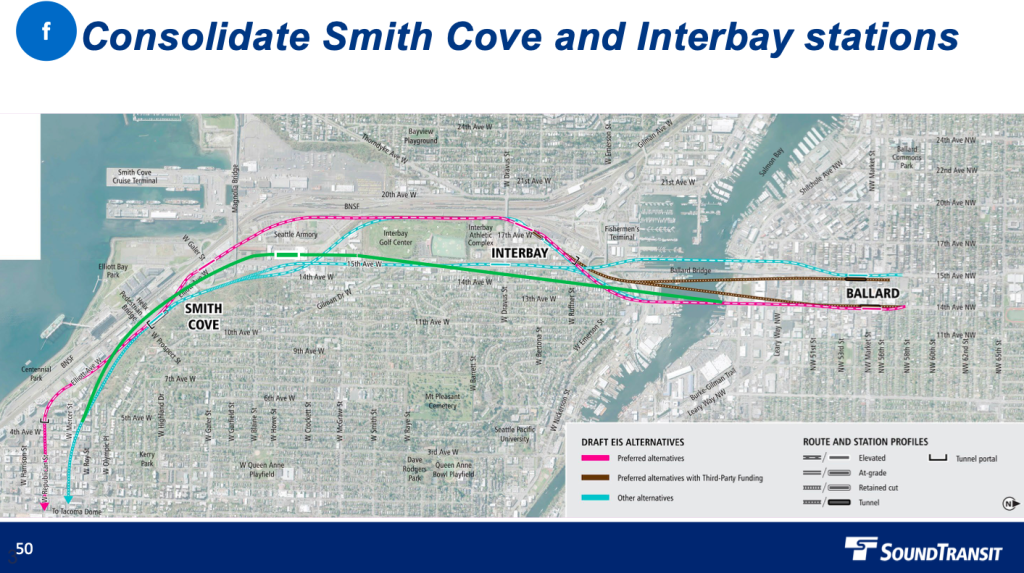
Other refinements were selected based on how they would assist with avoiding potential property damage during the construction process (Midtown), open up flexibility in alignment alternatives (South Lake Union Harrison), or facilitate connections to other forms of transit like buses (Andover Street).
After Sound Transit concludes presenting the concepts for cost savings and refinements to the community advisory groups later this week, it will pass on the concepts to its board, which will weigh in on what concepts it wants to investigate further. While these cost savings would help fill the $1.8 billion project affordability gap, costs are still estimated to run a half billion over what is needed to open the Ballard extension for its target date of 2037. Additionally, further study may reveal negative impacts on future riders or environmental considerations that exclude or complicate some possibilities.
Update: This article was updated on April 20th with the graphic showing the Junction and Avalon concept.
Natalie Bicknell Argerious (she/her) is a reporter and podcast host at The Urbanist. She previously served as managing editor. A passionate urban explorer since childhood, she loves learning how to make cities more inclusive, vibrant, and environmentally resilient. You can often find her wandering around Seattle's Central District and Capitol Hill with her dogs and cat. Email her at natalie [at] theurbanist [dot] org.

